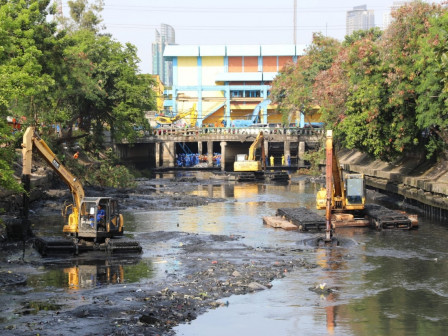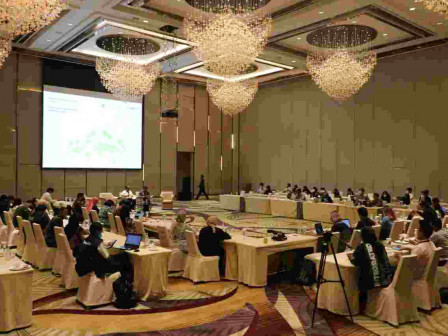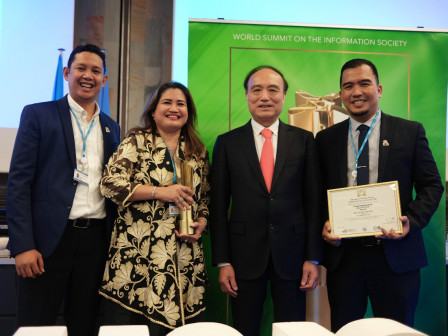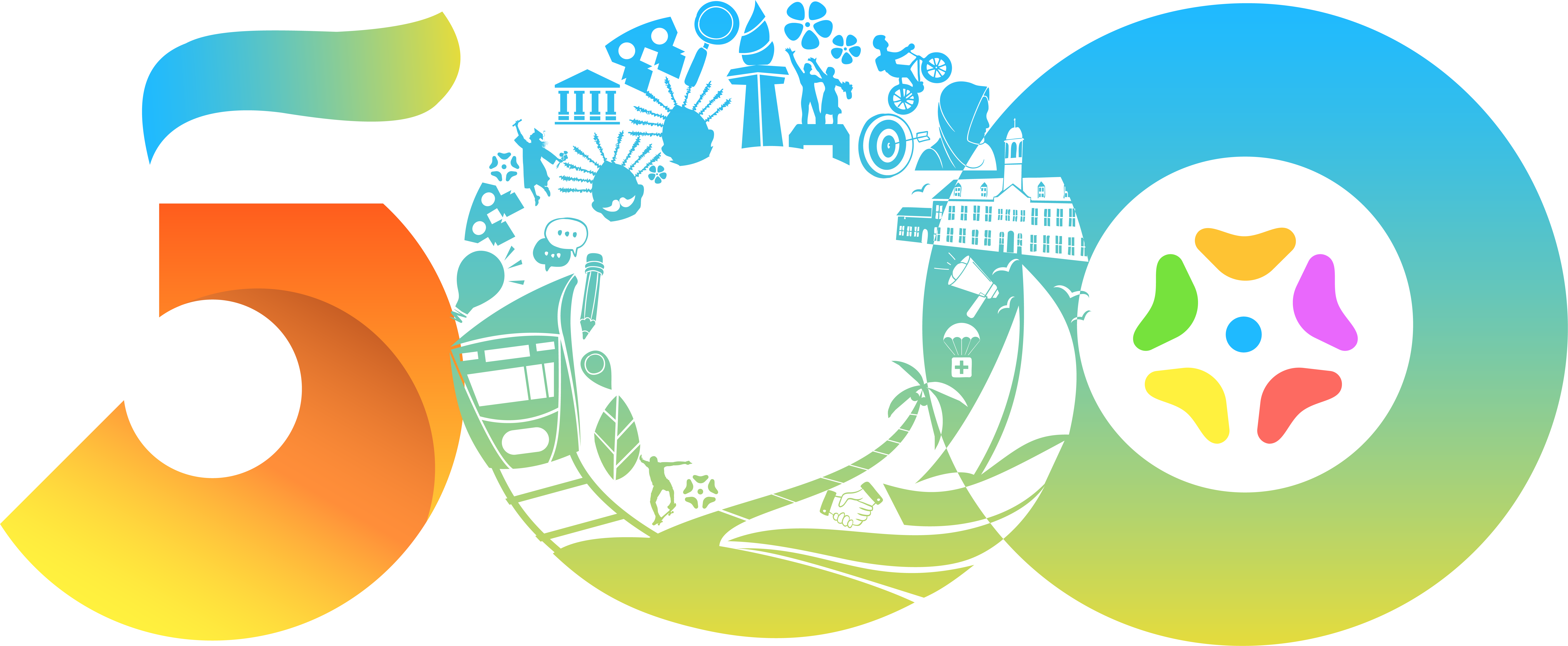Here are City's Steps to Handle Flood, Water, and Pollution Problems in the Last 5 Years
Reported by Folmer | Translated by Nugroho Adibrata
The problems of flooding, water, and air pollution are challenges from time to time in Jakarta. This is not a new problem, but in the last five years, tangible results have been seen in the efforts to solve it which will continue to be conducted sustainably
Jakarta's drainage system has a threshold
Facing Rainy Season, City Conducts Data Collection on Disaster Management Resources
Flood Control Strategic Efforts
Geographically, Jakarta is surrounded by 13 rivers, so the potential for flooding will always exist. However, for the past five years, the Jakarta Provincial Government has made significant efforts to improve flood management.
Jakarta Governor, Anies Baswedan stated that 'Siaga, Tanggap, Galang' (Standby, Respond, and Fight) became a firm grip for the ranks of the Jakarta government in anticipating floods in Jakarta. As a result, inundation recedes faster and the number of flood points decreases despite extreme rainfall.
“Jakarta's drainage system has a threshold. Jakarta's drainage capacity ranges from 100-150 mm/day. Therefore, if it rains with rainfall below 100 mm/day, we must ensure Jakarta is safe and the rainfall can be handled properly. Besides that, if the extreme rainfall is above 100 mm/day, inevitably the water will be inundated and flooding will occur," he expressed, as quoted by Jakarta PPID's press release, Sunday (10/9).
In 2020, 377 mm/day of extreme rainfall was recorded. However, flooding can recede more than 95% of inundation within 96 hours. This flood receding was recorded at a faster rate than in previous years, as happened in 2015, where with a lower rainfall of 277 mm/day, 95% of the flooded area could only recede within 168 hours.
In 2007, there was extreme rain with recorded rainfall of 340 mm/day, 955 RWs were inundated and more than 270,000 residents were displaced. Meanwhile, in 2020, with 377 mm/day of rainfall, the number of RWs that were inundated and fewer residents were displaced, namely 390 RWs inundated and 36,000 residents displaced. It indicates that the impact of flooding in Jakarta can be more controlled.
In flood control, the government has intensified various programs that are not oriented to concrete. One of them is Gerebek Lumpur program (a massive mud cleanup) in five regions of Jakarta, precisely in lakes, rivers, and reservoirs in Jakarta. It aims to help reduce the silting process by deploying the scaled machine up to 3 times its normal capacity.
Aside that, the Jakarta Water Resources (SDA) Agency has also built a swimming pool to anticipate and accommodate temporary puddles of water on the highway when it rains, which will then flow into rivers or the sea. Other efforts are repairing water channels, intensifying the installation of infiltration wells or vertical drainage, implementing Blue and Green, namely parks that become temporary water storage areas when the intensity of rain is high, providing rain gauges, and repairing pumps.
The government has 475 stationary pump units and 429 mobile pump units. The pump capacity has also increased by 54% in the last ten years, which is the current total pump capacity of 129 m³.
Now, they are focusing on completing a program of 942 projects, including 9 polders (a system to deal with tidal flooding consisting of a combination of embankments, retention ponds, and pumps), 4 water retention (reservoirs), and 2 rivers. By rehabilitating 9 polders, it can reduce the impact of flooding in the lower plains in North Jakarta, such as Teluk Gong, Kelapa Gading, Muara Angke, and other areas. While 4 reservoirs in Pondok Ranggon, Lebak Bulus, Brigif, and Embung Wirajasa will reduce flooding in the Sunter River, Krukut River, Grogol River, and Cipinang-Malay areas which also function as water reservoirs. The advantage is it's just flowed into the sea. There is also an increase in the capacity of two rivers, namely Kali Besar and Kali Ciliwung. All these steps are to control regional flooding. Evidently, 12 recurring flood inundation points have been resolved.
Apart from focusing on infrastructure, the government also keeps innovating with technology. The Flood Control System, the result of collaboration between Jakarta Smart City and the Water Resources Service, is one of the efforts, thus future flood management will increasingly follow the principles of evidence-based policy.
The advantages of the Flood Control System are a more accurate mapping of flood problems and more measurable flood risk management. To obtain more reliable real-time data, the government installed sensors at 178 points of pump houses and water gates as well as CCTV. These tools measure four types of data, namely water level, rainfall, water discharge, and temperature.
The data that has been collected is then analyzed and visualized in the form of a dashboard. Then, leverage machine learning to interpret the data.
"Well, these two steps, sensing, and understanding are very important. What was originally done manually, is now real-time. What was initially limited, now the data is abundant. Thus, monitoring flood management is more effective. Officers in the field can carry out flood management more quickly. We view this as progress and we will continue to improve it," he stated.
Clean Water Service
Still related to water, the government is committed to increasing access to clean water for all residents. Now, the cost of water expenditure can be lower thanks to subsidized water tariffs. It does not only apply to residents on the mainland but also residents on the islands.
"Clean water services are increasingly being expanded by synergizing water service programs, such as building water treatment plants (IPA), building reservoirs for raw water sources, to providing tank cars and water kiosks," expressed the Governor.
Jakarta has 150 water kiosks spread over 5 sub-districts with densely populated areas, namely Penjaringan, Pademangan, Cilincing (North Jakarta), as well as Kalideres and Cengkareng (West Jakarta).
Now, there is also a Drinking Water Treatment System (SPAM) to increase the scope of clean water services and become a solution to water pollution in Jakarta. The coverage of clean water services in Jakarta will reach 65.3% in 2021. By 2022, it is predicted that the coverage will be 65.77% with 25,000 house connections.
Clean water tariff subsidies are also applied to reduce the cost of basic needs of the community. The government has also issued Gubernatorial Regulation No. 45/2021 on the Provision of Subsidies for the Provision and Service of Drinking Water to realize higher quality drinking water services at affordable prices. There is also No. 57/2021 on Automatic Tariff Adjustment (PTO) for Drinking Water, thus water tariffs fall for Seribu Islands people.
Before the subsidy, the water tariff was Rp 32,000/m³, after the subsidy was Rp 3,500/m³ for simple households and Rp 4,900/m³ for medium households. The tariff for SMEs or household groups with businesses, homestays, guesthouses, hotels, food stalls, and shops is from Rp 35,000/m³ to Rp 6,825/m³. Then the tariff for private offices or other places of business/industry is Rp 12,550/m³ from the previous Rp 35,000/m³.
For in Seribu Islands, there are also 8 water management installations (IPA) with Sea Water Reverse Osmosis (IPA SWRO) technology, which is one of the high-level technologies to convert saltwater/seawater into fresh water. The construction of the SWRO WTP provides many benefits for the residents of the Seribu Islands, due to the availability of abundant sources of clean water with raw water sources from seawater and at affordable prices.
Initiation of Controlling Jakarta's Air Pollution
The density of Jakarta is correlated with the high use of private vehicles, which can increase the level of air pollution in this city. To control it, the government issues Governor's Instruction No. 66/2019 which includes 7 air quality control initiatives.
Those 7 initiatives are the Rejuvenation and Emission Test of Public Vehicles; Application of Odd Even, Parking Rates, and Congestion Pricing; Tightening the Emission Test and Age of Private Vehicles; Encouraging Mode Switching, Increasing Pedestrian Comfort and Facilities; Tighten Control of Immovable Pollutants; Greening of Public Facilities and Infrastructure; and Start Switching to Renewable Energy.
Aside that, the government also did not file an appeal against the residents' lawsuit against air pollution in Jakarta. They are committed to being ready to implement the court's decision on the lawsuit for better air quality. Because every resident has the right to a healthy environment.
Of all the lawsuits, an agreement was reached on the implementation of emission tests and evaluating them periodically, tightening emission quality standards and imposing sanctions for businesses and/or activities of fixed air pollutant sources (STB) operating in Jakarta, providing sanctions for the act of burning waste which were immediately imposed. since the violation of obligations was carried out, adding an air quality monitoring station (SPKU), to develop a Strategy and Action Plan for Air Pollution Recovery.
As a commitment to preserving the environment, the government revoked the environmental permit for the loading and unloading activities of PT Karya Citra Nusantara (KCN) in the aftermath of coal dust pollution in Marunda. The government will increase the supervision of other business actors so that they do not commit similar violations. It is hoped that the community can actively monitor and be involved in efforts to prevent environmental pollution.
To make it easier for the public to search for air quality information in Jakarta, the Jakarta Environmental Agency made an air quality data information channel that combines monitoring data from all monitoring devices in Jakarta on the Jakarta Low Emissions website: https://rendahemisi.jakarta.go.id.





